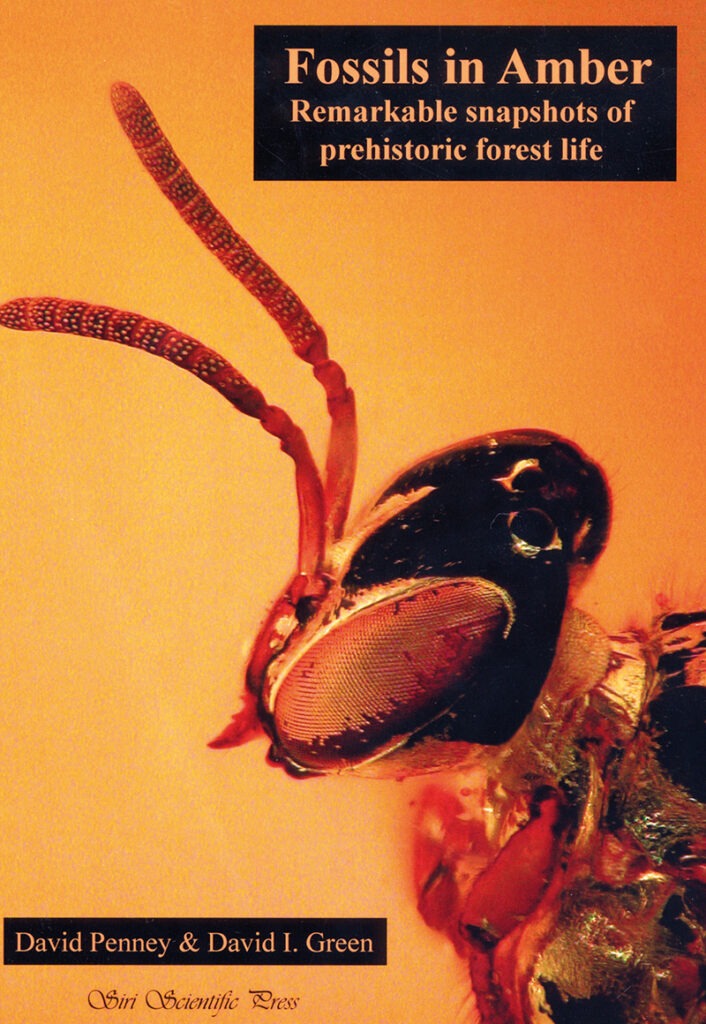Fossils in Amber
Remarkable snapshots of prehistoric forest life
By David Penney and David Green

I have learned to like amber and this certainly isn’t the only book on the subject I have reviewed (see Amber: Tears of the Gods (special edition) and Dominican Amber Spiders). I make no apologies – it’s a fascinating subject.
However, if you like fossils in amber, you should definitely get this book. But, if you don’t like creepy-crawlies, perhaps you shouldn’t – as it’s the pictures that make it a resounding success.
Most of Fossils in Amber consists of colour photographs taken by the authors using methods and technology that, if you didn’t know otherwise, you would make you swear that the creatures had only just died. And each picture is accompanied by authoritative text providing more than enough information to get a feel for the insects, arachnids and plants, and the scientific information that such fossils have provided (and continue to provide) about the ecosystems and biodiversity of the ancient tropical forests in which they lived.
Indeed, the pictures show that amber preserves not only the animals in death, but also their behaviour just before their capture by the sticky tree resin – mating, hunting, feeding and egg laying, to name but a few.
The book necessarily deals with the science of amber in brief. Therefore, if you are interested in this and by inclusions in amber, you will be blown away by this book. That is, it displays – in the clearest possible way – that amber can preserve small animals with a life-like fidelity, including their minute structures. And now that the technology has caught up, the pictures that can be taken display this splendour in wonderful Technicolor.
In short, I certainly recommend this book. It’s stunning.
Fossils in Amber: Remarkable snapshots of prehistoric forest life, by David Penney and David Green, Siri Scientific Press, Manchester (2011), 215 pages (paperback), ISBN: 978-0-9558636-6-0; 126 pages (hardback), ISBN: 978-1-907701-02-3